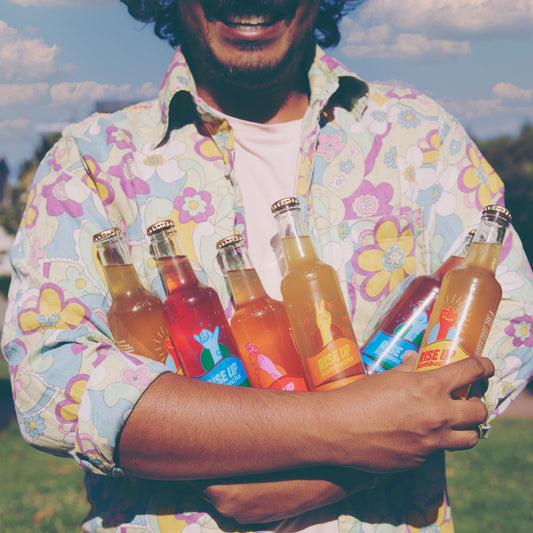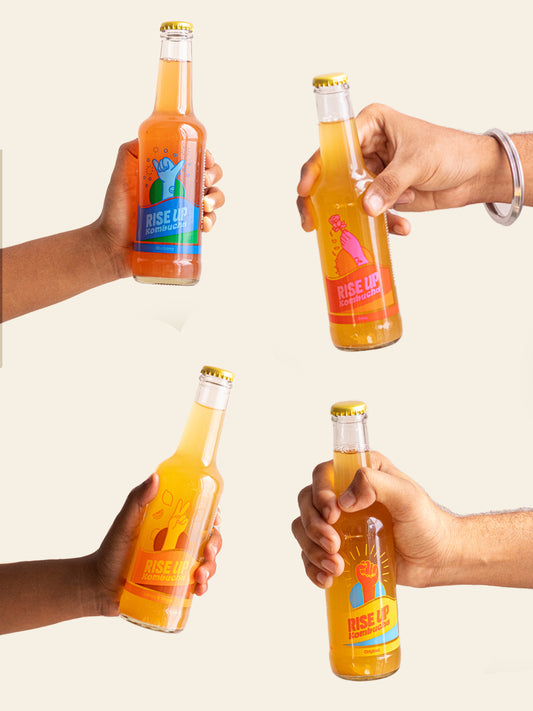The wonderful world of kombucha! An entire galaxy inside of a brew jug - growing, changing, alchemising, transforming. It is both a mystery and a science, much like life itself. If you've been wondering what the heck is happening during kombucha fermentation, read on.

After adding the SCOBY (symbiotic culture of bacteria and yeast) to the brew, the yeast is the first actor of the play to take the stage. Yeasts begin to rapidly consume sugar and produce bi-products of ethanol (which is basic alcohol) and carbon dioxide (fizz!). They tend to live around the lower half of the jug and when their work is done, they will settle to the bottom.
In the second half of the brew cycle, the bacteria wake up and are ready to eat! They feed on the bi-products of the yeast -- namely on the ethanol. The bacteria consume both sugar and ethanol to produce a range of organic acids, including lactic acid, which give kombucha its signature sour taste.
At Rise Up, we decide to flavor and bottle the kombucha when it has reached our desired balance of sweet and sour.
Even after bottling, the kombucha remains alive and processing! The play doesn't end, there is no intermission, there is no curtain call. Fermentation is an ongoing process. Now the booch is bottled and there is a cap on top. This is how each bottle gets fizzy with its delicious natural effervescence. Carbon dioxide is still being produced by the yeast, but with no where to escape to, it continues to circulate within the bottle, thus pressurising it.
There is much to kombucha that we know, and also a little bit that remains a mystery. As with every ferment, the process is affected by temperature and ingredients. A brewer friend of ours in Seattle plays soothing classical music to all of his SCOBYs because he swears it makes the kombucha taste better :)
Keen to nerd out on the brew process further? Why don't you learn to brew for yourself!







